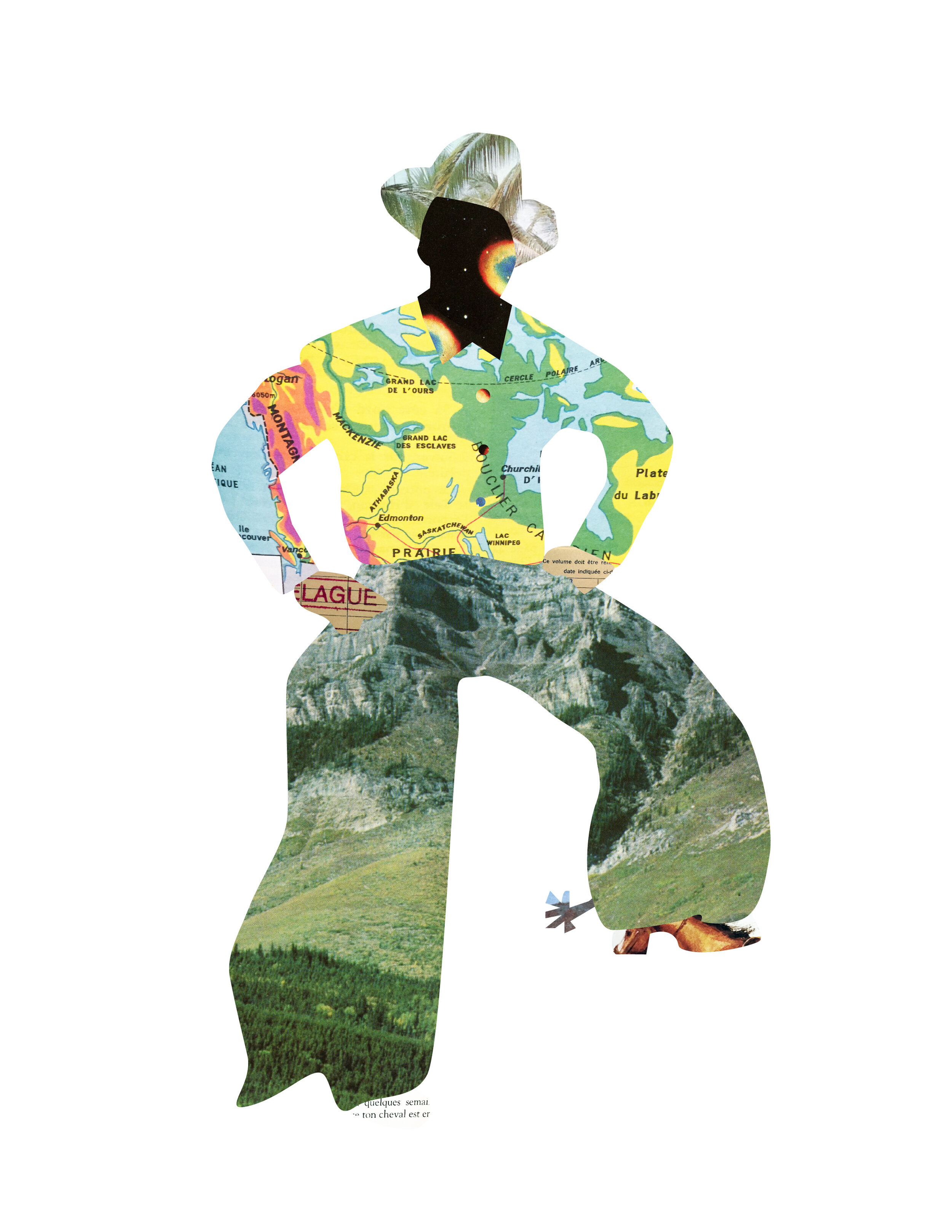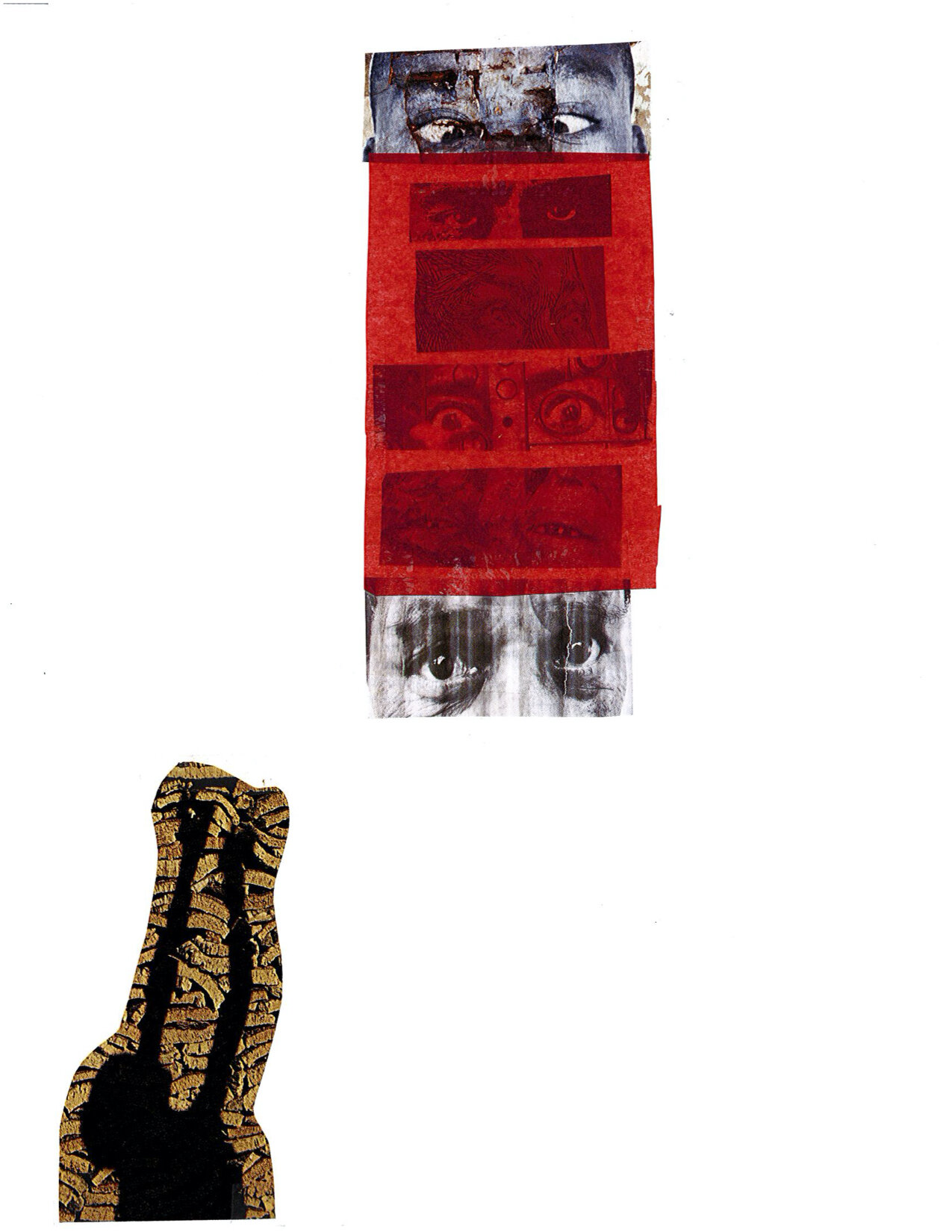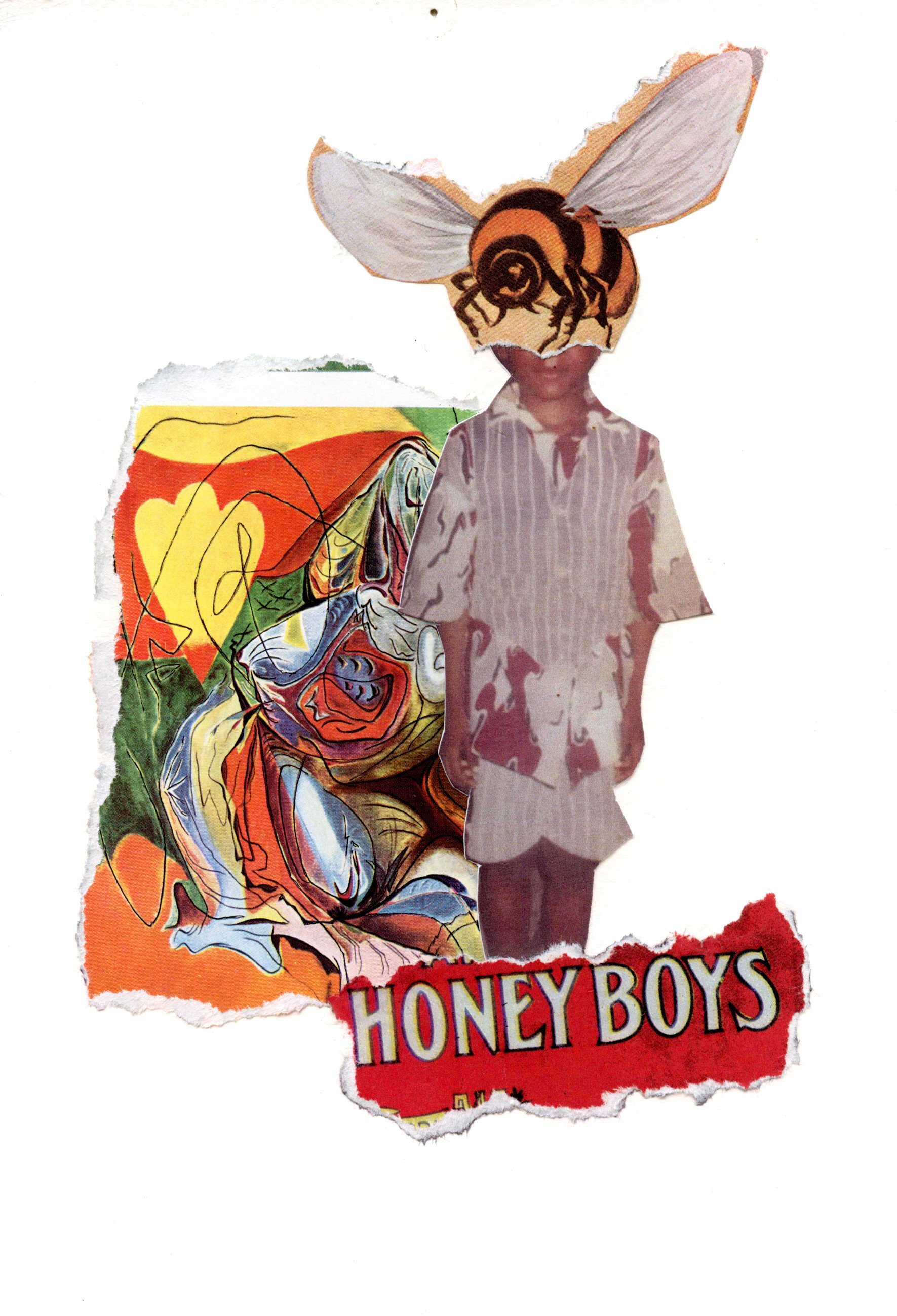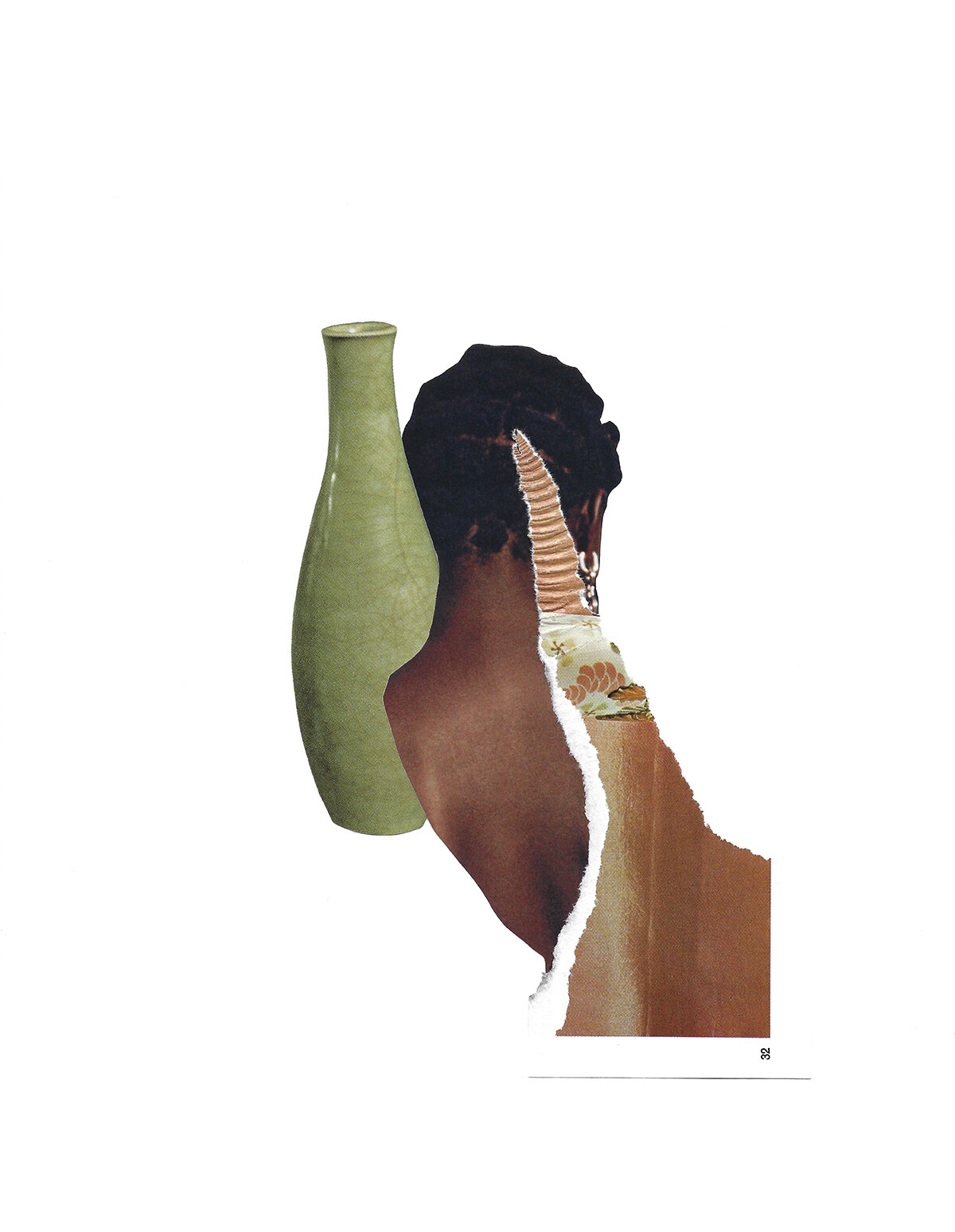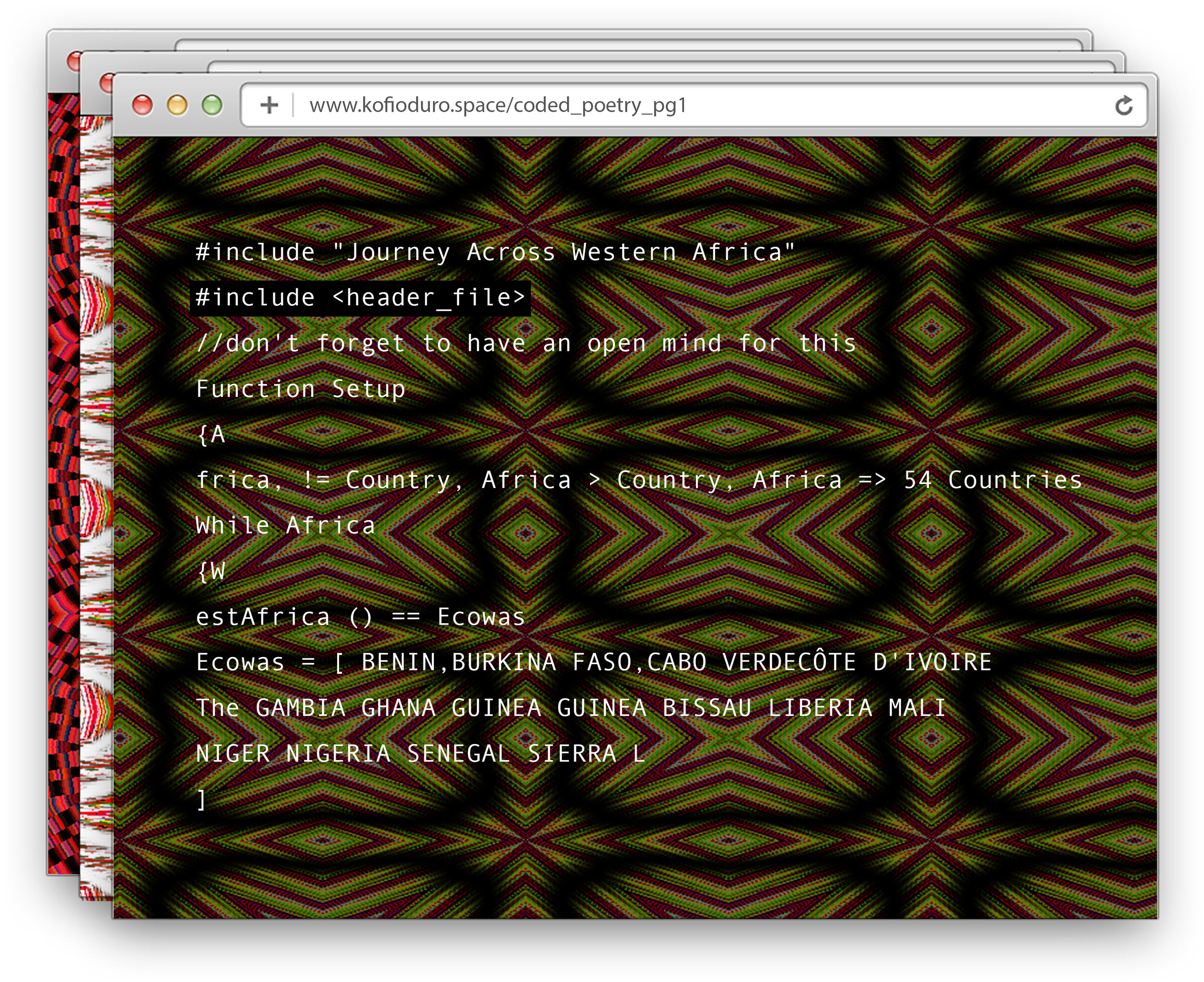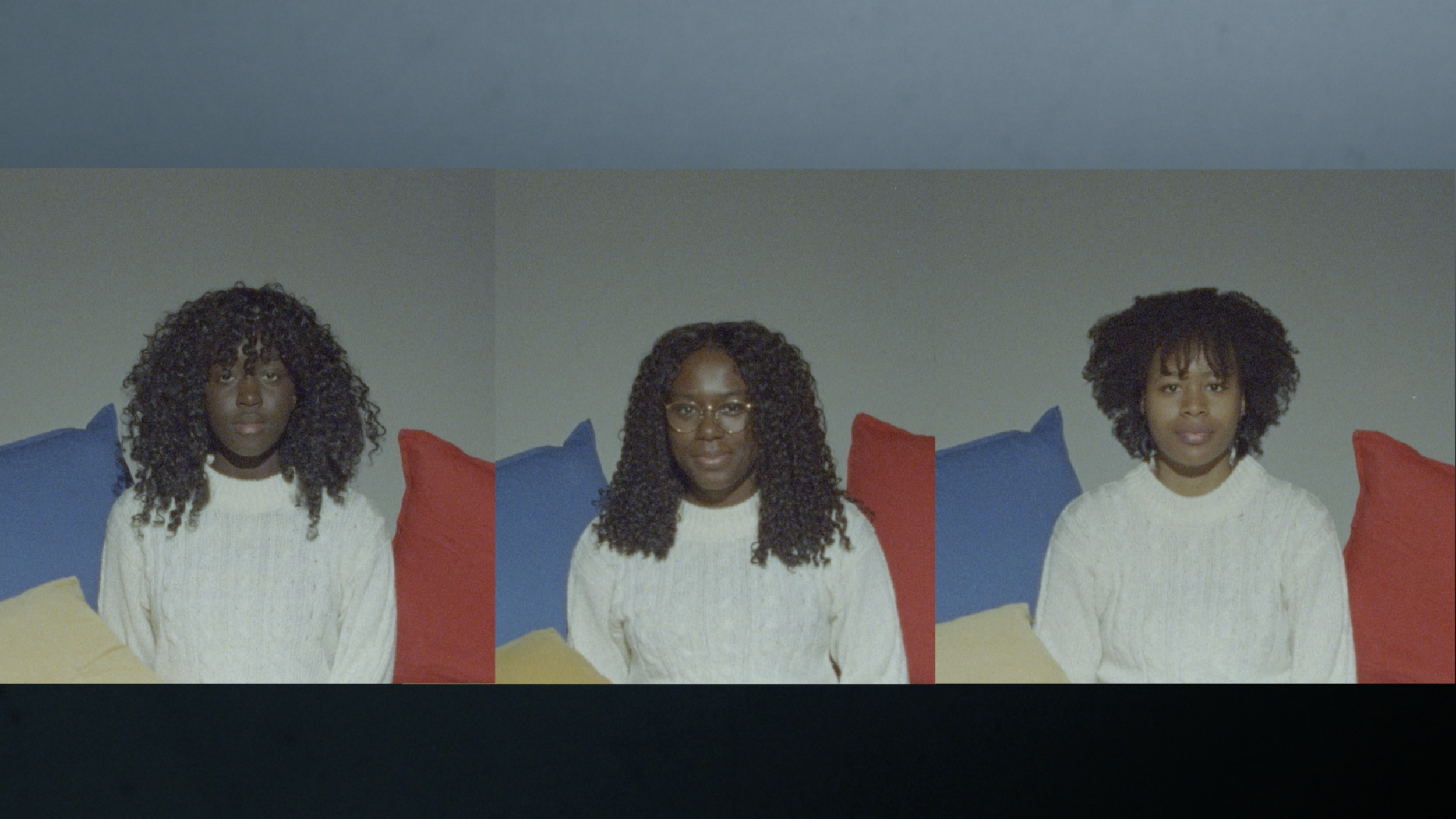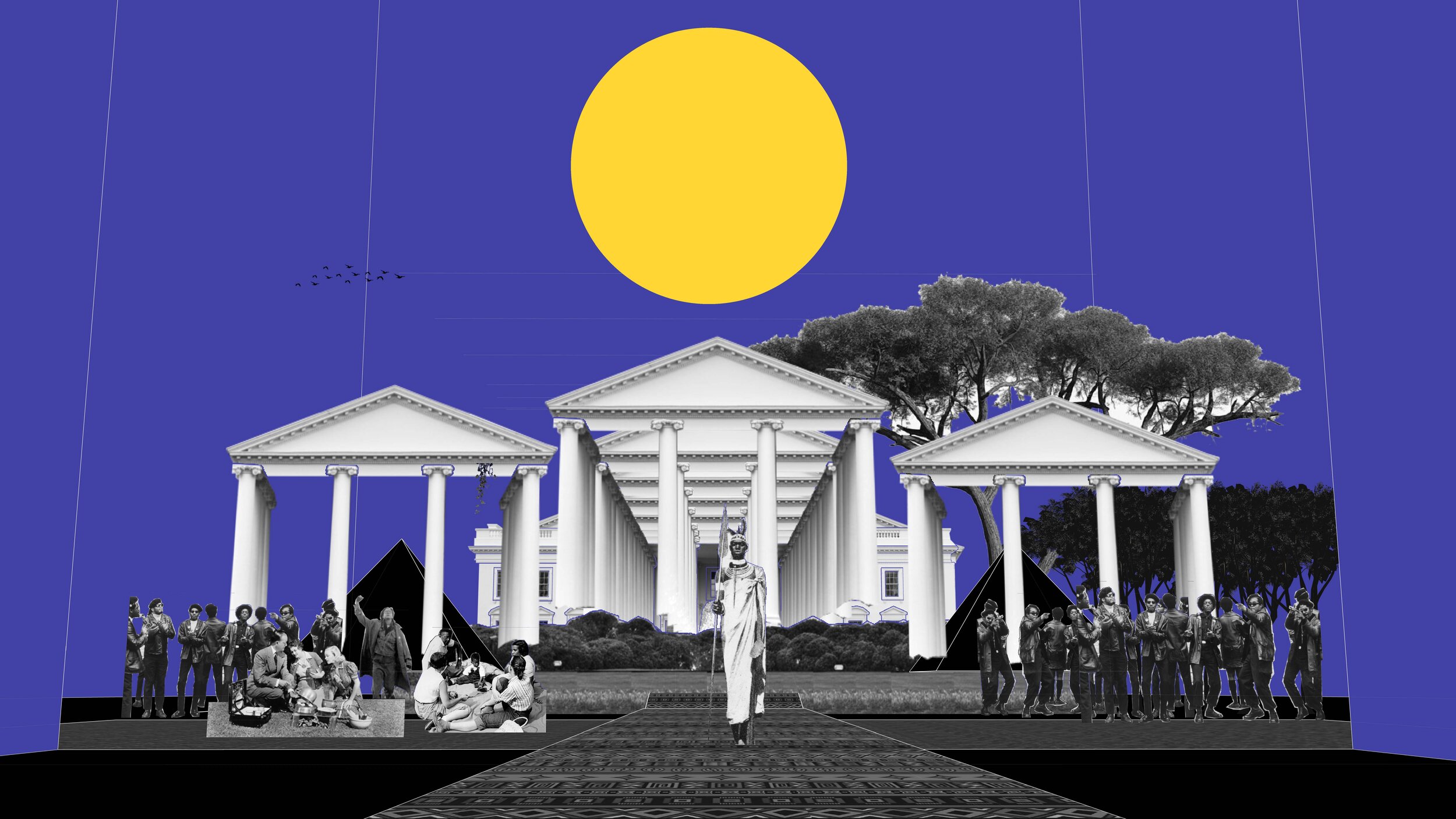In Conversation With: stylo starr
PITCH Editor, Adeola Egbeyemi, discussed the editorial feature of Issue Two — the cut, the tear & the remix: contemporary collage and Black futures — with its curator, stylo starr.
Adeola: The first thing I wanted to ask about, just because I’m not sure how familiar a wider audience would be, is what is curation and what does the process of it mean to you?
stylo: I’m still figuring that out, honestly! [laughs] On the surface, the idea is the collection of items, pieces of work — people curate Instagram newsfeeds or Twitter. In the case of my mentorship, we’re concerned with curation from a gallery standpoint..
Curation takes so much! You work in, for or with a gallery, you’re in charge of putting together a show — by theme or just a collection of one artist's work for example — and that’s just the surface of it. There’s deep research required; you’re always reading, you’re always writing, you’re always investigating.
It’s so much more profound of an interaction with art than I imagined it would be. It’s the research end of art-making — you don’t necessarily have to be an artist to be a curator. But there’s a sensitivity that is required to understand different art-making practices, in the very least. It’s a lot.
It’s also not something I considered as a path in my career. Pamela [Senior Curator at the McMaster Museum of Art] was the first person to suggest I consider curation. She truly is so much more than a mentor. She encouraged me and something about it felt natural. It felt good to meet with the artists and build the show — well the writing process was hell! [laughs] — but it felt good to show work that could be consumed in different ways - in a magazine, as a virtual exhibit.
Adeola: Yeah! That’s super insightful. It’s really an active process.
“But the cut, the tear & the remix was the idea that even though we’re all here, we’re coming from histories — maybe, I don’t want to assume and I don’t want to generalize, because we aren’t monolithic — of separation, of migration.”
S: It’s always active. You’re never quite done the job. Once we had our call for submissions out, we had about 40 artists across Canada submit, which blew my mind.
A: And even if we wanted to step forward and apply curation specifically to this show: the cut, the tear & the remix. If you wanted to give more of an overview of the vision, specifically into the title? I feel like there’s a lot to be gained from it.
S: Yeah, there are many layers to the title. Pamela brought up a really great article that was discussing collage, just in general. And one of the quotes just describes — I don’t remember that man’s name... sorry to that man —
A: [laughs]
S: — but the quote was something like “the cut, the tear” and he went into a more poetic description of the collage. And I was like what about the remix? That’s exactly what we’re doing here, such an intrinsic part of Black culture is the remix.
A: Yep.
stylo starr, photographed by Ariel Bader-Shamai
S: We always know that if a fire album or record drops, there’s going to be the question of who’s gonna be on the remix? And I’m coming from the era of being 10 or 11 in the early 90s, the era of Puff Daddy’s remixes — I know he’s Diddy now, but back then he was Puff Daddy — where you knew when one song dropped, within two weeks, three weeks, there was gonna be a remix.
So I guess that was heavy on my mind and my heart in my focus with the show, but so was the question of, why is it so hard for so many of us Black artists to find each other? I know there are other artists out there like me who are working in collage, who are interested and invested in the cosmos and the ways of the Afro-future — where are they? And not just in the States, I know they’re here.
We did reach out to a few artists, but it was really the call for submissions that got some fantastic responses. I am still blown away like ‘is this what it took?’ [laughs] ‘creating this call?’
But the cut, the tear & the remix was the idea that even though we’re all here, we’re coming from histories —maybe, I don’t want to assume and I don’t want to generalize, because we aren’t monolithic—of separation, of migration. Whether that be through our generation or generations prior to us. My parents are immigrants, I’m first generation, so I have that experience.
A: Same here.
S: And same with a lot of the artists, if not all of the artists in this show. Some actually migrated here with their families, and that’s a completely different lens because you’re coming right from the diaspora, whether that be the Carribean or Africa. So there’s that idea that translates into collage, cutting and remixing.
We were also able to approach collage from not just the actual cut-tear, like, you know, with paper, but also from the scope of digital collage artists, photo montage artists, video collage, hyper text and web collage artists.
They are taking that material, taking fragments from it, their lives, ancestry and trying to reconnect and re-acquaint themselves to it. And creating something new out of it, a new identity or a new narrative, a new mythology.
A: That’s incredible. And thank you for that wide exploration into the name and also into some of the works. You know, there could have been a regression to just the past and maybe even present dimensions, but I thought the emphasis on Afro-futurism was really interesting. And that pushing towards the future—is there anything you’d like to speak towards on that aspect?
S: I mean we can’t talk about the Afro-future without a full acknowledgement of the past and present.
A: Yeah.
S: We can’t acknowledge the present without the past. And we can’t acknowledge the future without acknowledging where we’re at right now in the present. They are forever woven and interconnected. My diaspora is Jamaican, but I’m interested in the idea of sankofa, which is the Ghanaian philosophy of “go back and get it”.
stylo starr, Ancestral seeds, Universal rhythm, 2019
You have to look back, learn lessons of the past and see how they can either be applied to or improve the future.
That goes across the board for everything, for medicine, for politics, for education—all of that. And I think that artists are keenly aware of that, and I think Black artists, even more so, are super keenly aware.
Like, they talk about space travel. The moon and the stars! And it’s like, we’ve already been there! We are the architects of astrology and astronomy. We’ve been talking about this, we’ve been worshiping the sun and the planets. It’s carved into our stones, it’s carved into our pyramids, it’s carved into our temples. We already know this stuff.
But there is a necessity to go back and reacquaint yourself with that knowledge, in order to move forward into the future. I think each of the artists in the show, in their own way, is actively involved in that excavation right now. They are looking through their bloodline, their history, their ancestry and figuring out what may have already been, that is existing in them and how it might be applied in the future.
A: That relationship between temporality is, you hit it on the nose, such a balancing act of looking backwards and looking forward and being rooted at the same time.
S: It’s all happening at once.
A: And I think it is something that Black people are so intimately familiar with.
S: Yeah. And whether that’s through, sadly, trauma, or also, joy. I found a video of a group in Africa, old footage from the turn of the century [laughs] and... These people were break dancing.
A: [laughs]
S: Like I shit you not. They were break dancing. They were spinning on their heads, they were doing the set-ups, all of that. They weren’t battling per se but they were in a circle, everybody was hype, people were, like, sliding in on their heads, doing spins and freezing!
And I was like, ‘oh shit, we’ve already been here!’ That’s just so beautiful, just to see that.
There are so many parts of us that are always constant and finding them, it’s like… It reminds me of when an elder gives you a Werthers candy, just a sweet treat out of nowhere. This actually happened to me yesterday!
It’s just so important for us to look back because there’s no way to properly enforce and fortify your foundation for the future without it. It's just impossible.
“But something in my intuition leads me to believe there is something deeper and something older that is collage, that is just Black! I just feel like we are the originators.”
S: A lot of the artists in the show are talking about ancestry, but when you look at your immediate ancestry — people who are still earthside or people who are just freshly on the other side, transcended — it’s just funny to see the parallels that are concurrent, that run through each one.
Emkay, one of the artists, and I had hit it off really well, because they were talking about how, for them, collage was a breathing practice.
A: Wow.
S: And that’s exactly how I approached collage, especially collage in the group setting. It’s really important for me to set the intention, create the space, cast the circle, whatever you want to call it. It is kinda witchy, but you know, it’s important. For a lot of people artmaking is an intimidating practice because of the society we live in. People are really hell bent on external acceptance, making sure this work looks good because they want people to—
A: Like it.
S: Like it, yeah, they want the clicks, the re-tweets, whatever. Ultimately, it just doesn’t matter.
A: What you’ve presented is so awesome. Especially considering how experiences of your parents at specific ages mirror your own. I see that exact same thing. My parents immigrated here and it was around my age now when, like, they were in Nigeria thinking we want a life outside of where we are right now.
S: Can you imagine?
A: It’s... yeah.
S: Can you just imagine?
A: The amount of future vision that takes, too, I think really ties in well to the feature.
S: When I look at photos of my parents freshly immigrated to Hamilton, with their afros and bell bottoms and foggy camera photos, I see that reflected in FEZA’s work with photo montage. It’s the same texture of that vintage feel, you know? I love the idea of commemoration of the recent past and I value the few artists in the show that do that too.
FEZA, Safi & Safi, 2020
A: That’s an excellent phrase: commemoration of recent past.
S: Because it’s going back to say thank you, and to think or just sit in the beauty of it. Whenever I go home to see my parents — they're just a few minutes away from me— if I’m there for an extended amount of time, I’ll go pull out the giant Rubbermaid full of pictures, just go through them. I would take a bunch of them, and my mom would protest, because I’m trying to work some of it into my own art-making. But she’s very precious with them — though I wish she would give them a better home than a Rubbermaid. [laughs]
A: Yes! Okay, I wanted to... I’m not sure how much this will relate, but when you said “recent past”, something struck me from the recent present, like this resurgence of remix culture. And I think especially with TikTok this summer?
S: Yes! Wow. Yeah, you just hit on something.
A: Yeah, I think I’m seeing the cycle come back again. And I’m seeing, you know, a Black artist releases a song and everyone’s like, you know, I can’t wait for the remix. I want Megan, I want Nicki on this!
S: And further than that, I was just on Twitter and I got a little emotional because the latest TikTok dance is a remix of —here we go — Natasha Bedingfield’s song ‘Unwritten’.
And you know, everyone is doing the dance in the subway station, they’re doing flash mobs with it—it’s the cutest TikTok dance. And she dueted with a group of kids that did it, and it’s so awesome because I don’t think those kids realized she’s the one who wrote that song over a decade ago. It just blew my mind, there’s just so much going on, there’s just so many layers and life has just become so collage-y. It’s so bizarre.
A: Yes, and I think Black people are driving the core of this movement.
S: Yes! It’s wonderful to see it happening. That’s such a good point. TikTok is literally doing this. And Black people are driving TikTok, even though TikTok —
A: Is not acknowledging them…
S: Social media and their algorithms are racist — point blank period… but in the face of that, here we are thriving and creating and driving how creation looks, what it sounds like — it’s really phenomenal.
And what I was trying to say, at least in the artist statement of the editorial, was that collage is remix, which is inherently Black. So, ergo, collage is Black. I know a lot of people attribute collage to Picasso, and to the Dadaists, but I’m just not all the way convinced.
Ghislan Timm, black orpheus (ii.), 2020
And I don’t have conclusive research to back that up, but it feels intuitive to believe there is something deeper and something older that is collage… that is just Black! It feels like we are the originators.
A: I will second that motion.
S: Thank you! [laughs] And when I think of the remix, I’m trying my best to, and I thank you again for even mentioning TikTok, because I’m trying to align my ideas of remix with media now. This is big for me.
I’m thinking of people who are on the pulse of today’s contemporary or popular media. But they're also calling back, harkening back, thanking and commemorating old songs. I’m thinking of Snoop and how often he and Dr. Dre would sample Parliament-Funkadelic. And when we think about it — Parliament-Funkadelic were afro-futurists!
A: [laughs] It’s all connected!
S: For their stage shows they literally emerged from a spaceship and they were all dressed like aliens! You know?! It’s so hard to speak about this show in a linear fashion because it’s really more like a mobius strip. It’s one line that is just travelling and undulating through past, present, future, an interconnected and revolving type of concept. Which just feels Black!
Parliament-Funkadelic leader, George Clinton, emerging from “The Mothership” during a live show from the P-Funk Earth Tour, 1976. Photo by Diem Jones.
A: Yeah! Yeah.
S: It's like the hashtag “if you know, you know” or the acronym IYKYK, is Black. And when I say that, I can’t quantify that any further.
A: If you know you know, you know?
S: Yeah [laughs] It just feels Black.
A: I was going to ask “what’s one thing readers should look out for” but I feel like you sort of read my mind, in that, it’s expanding, it’s diverse, it’s interconnected, but it’s one.
S: It’s one.
A: And it’s together and it’s centred.
S: I really, truly hope people pick up PITCH, not only for the editorial, but also because it’s beautiful. What a gorgeous evolution from Issue One to Issue Two — everyone is in for such an incredible treat. I hope that people are able to take something away from the editorial and feel connected to these artists. And also — big-up these artists! Go to their social media and talk about their work and interact with them because they are some really fantastic people.
I was really honoured to have a chance to do studio visits through Zoom, where we’d sit and chat for an hour and just talk about art, which is awesome as an artist. All I wanna do sometimes is just ask, like, what kinda glue sticks are you using? Did you use a paintbrush for that? Oh, shit I never knew! I hope that the readers will stay tuned for the virtual launch cause that is…
It’s next level.
Spatial-ESK, Detail of Political Pavilion, 2020
S: We’ve got SPATIAL-ESK, for example, who is one of the artists featured, a digital architect. He builds spaces in the digital realm but they aren’t the conventional four walls, roof, floor. It’s really stellar. When I saw his submission, something went off in my head, because initially, I wasn't really sure how I wanted to present this show. I was tired of the scrolling experience, and I’ve seen some really dope 3D experiences for galleries.
A: It embraces the digital world we find ourselves in.
S: Yeah. I didn’t expect it to do that so well, but it worked out beautifully. I’m very very proud of this project and I’m very excited for everyone to finally see it. This show is a game-changer, it really truly is.
As a Black female artist, and now curator, it feels good for people to take what I am doing seriously. It's my homecoming—Beyoncé had hers—this is mine!

